Our application allows users to trace closed curves composed of straight lines and arcs. These closed curves can have holes within them which are also made up of straight lines and arcs. Something like this:

The number, position, orientation, diameter and sweep/angle of arc segments and straight segments is variable.
How do I go about calculating the area within the closed curve excluding the area of the holes? I know how this can be done by approximating the arcs with a series of line segments. But is there a better, more accurate algorithm to do this?